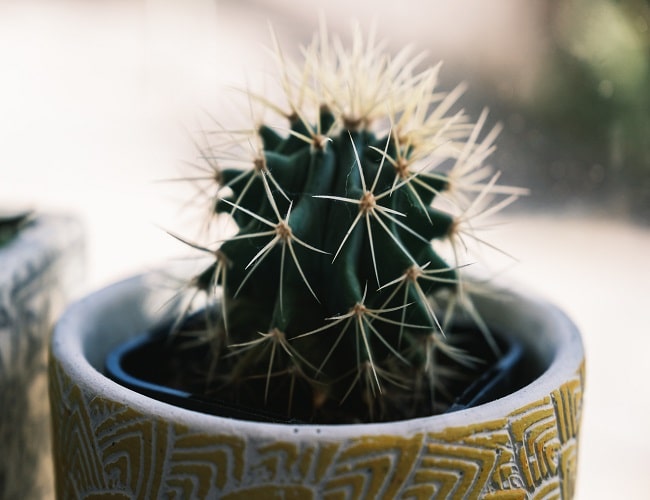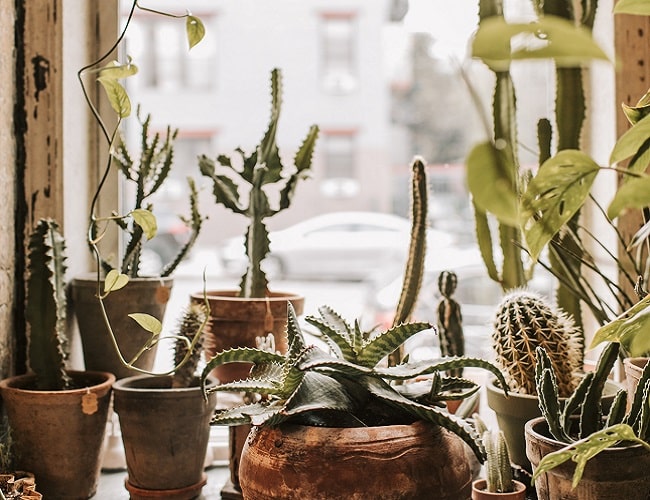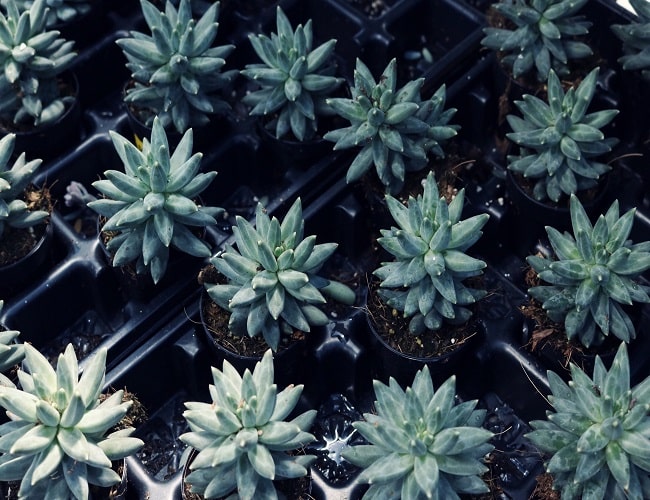Last Updated on May 8, 2023 by Md Deloar Hossain
Cymbidium orchids, also called boat orchids, are a group of evergreen perennial plants from Asia and Australia. Cut flowers and decorative gardens employ them.
Cymbidium flower spike growth stages, or inflorescences, mature in stages. These stages are vegetative, spike emergence, spike elongation, and flowering. Understanding these stages allows cymbidium gardeners and fans to support healthy flower spike growth.
This blog post examines cymbidium flower spike growth from emergence to fading. I will also address how light, temperature, watering, fertilizer, pests, and disease affect cymbidium flower spike growth and how to best care for it.
Quick Navigation
- 1 The Different Stages Of Cymbidium Flower Spike Growth
- 2 Factors That Affect Cymbidium Flower Spike Growth
- 3 Most Commonly Asked Questions
- 3.1 How Long Does Orchid Spike Take To Grow?
- 3.2 How Long Does It Take For Cymbidium Buds To Flower?
- 3.3 How Often Do Orchids Grow Spikes?
- 3.4 What Does A Healthy Orchid Spike Look Like?
- 3.5 How Long Do Orchid Spikes Take To Flower?
- 3.6 Why Is My Orchid Spike So Short?
- 3.7 Can You Repot Orchid While Spike Is Growing?
- 4 Conclusion
The Different Stages Of Cymbidium Flower Spike Growth

Cymbidium orchids are famous for indoor and outdoor gardens because of their flower-covered spikes. Understanding cymbidium flower spike growth stages are essential for correct care and full bloom. Here is a detailed look at cymbidium flower spike growth:
The Vegetative Stage
During the vegetative stage, the Cymbidium plant is focused on making leaves and roots, and there are no signs that flowers are growing. Since the plant’s energy is going to leaves and roots, the spike won’t appear.
The plant will grow larger, produce more leaves, and strengthen its root system during the vegetative stage. This stage stores energy for the plant’s flower spike development and is vital to its health.
Cymbidium cultivar and growth conditions affect vegetative stage length. The spike won’t occur until the vegetative stage is over, which can take months.
The Spike Elongation Stage

During the spike elongation stage, the flower spike on the Cymbidium plant starts to grow longer, and the buds begin to form. The spike is a long, green, or pink stem with tiny, spherical, green buds.
Buds will develop more extensively and more distinct during spike elongation. As it grows, the spike’s stem may turn pink or red. The buds will also become more noticeable and exhibit their blossom colors.
The plant will produce leaves and roots throughout this period. The plant will focus on flower spike and bud growth. This period lasts several weeks, and the plant needs proper care and nutrition to grow and blossom.
The Spike Emergence Stage
The Spike Emergence Stage is when the flower spike starts to stick up above the leaves, and buds appear. The spike will look like a little green stalk from the leaf clump base. Tiny, unformed buds will form.
The plant will focus on spike and bud production. The spike and buds will grow. This stage usually lasts weeks. For good growth and blooming, the plant needs adequate care and nutrients.
The cultivar, growth conditions, and climate affect stage timing and duration.
The Flowering/ Blooming Stage
During the blooming stage, the Cymbidium flowers will fully open and spike at their entire length. The spike is a stem with numerous open blooms, usually a spiral shape. Cultivars determine blossom size and color.
The plant will focus its energy on open flowers at this stage. The blossoms will droop and disappear over several weeks.
The cultivar, growing circumstances, and climate affect the blooming stage’s timing and duration. Some varieties bloom for weeks or months. To guarantee healthy growth, blossoming, and flower longevity, the plant needs proper care and nutrients throughout this period.
The Fading Stage
The Fading stage is the last step in the growth cycle of the flower spike of a Cymbidium plant. It comes after the Blooming stage.
The blooms will wilt and fade, the petals will lose color, and the spike will dry out and brown. The spike and flowers will dry and droopy.
This stage is when the plant produces seed pods or fresh flower spikes. Some Cymbidium cultivars will wilt and perish without seed pods.
Before removing the spike from the plant, let it dry completely. Early removal can disrupt the plant’s growth and prevent fresh flower spikes. The cultivar, climate, and growing conditions determine this stage’s length.
Caring Tips For At Every Stage
Providing the right conditions for the orchid to thrive is essential to care for the spike during this stage. Some tips for caring for the orchid during all stages include:
- Keep The Orchid In A Warm And Humid Environment: Cymbidium orchids prefer temperatures between 60-70°F (15-21°C) and humidity levels of 50-70%.
- Provide Bright, Indirect Light: While cymbidium orchids prefer bright light, they should not expose to direct sunlight as it can damage the leaves.
- Water And Fertilize Properly: Keep the soil moist but not waterlogged, and fertilize the plant with a balanced fertilizer every 2-3 weeks.
- Proper Potting Medium And Drainage: Use a well-draining potting medium and ensure the orchid has good drainage to avoid waterlogging.
- Deadhead The Flowers: Remove the wilted flowers to keep the plant looking neat and to prevent the plant from expending energy on seed production.
- Avoid Moving The Plant: Once the flowers have bloomed, it is crucial to avoid driving or disturbing the plant as much as possible to prevent damage to the flowers.
- Cut The Spike Off The Plant Once It Has Died Back: This will allow the plant to focus its energy on growth and new flower spikes.
Factors That Affect Cymbidium Flower Spike Growth

Several factors can affect cymbidium flower spike growth, including light, temperature, watering, and fertilization.
Light
Cymbidium flower spikes grow with light. Orchids need intense light to bloom, yet direct sunlight might injure them. They need bright, indirect light and shade to set buds and grow correctly.
Temperature
Temperature also affects the growth of flower spikes on cymbidium plants. The orchids like it when the temperature is between 60 and 70 degrees Fahrenheit (15 and 21 degrees Celsius), and the humidity is between 50 and 70%. If the temperature is too high or too low, it can change how the flowers grow and develop.
Watering and Fertilization
Watering and fertilizing are also essential factors that can affect the growth of the spike. Keep orchids wet but not soaked. Overwatering causes root rot, and underwatering drops buds. Orchids need balanced fertilization every 2-3 weeks to develop robust and healthy.
Pests And Disease
Pests and diseases can also slow the spike’s growth. Spider mites, scale insects, and mealybugs attack cymbidium orchids. Root rot and fungal and bacterial infections can impede spike growth. Keep orchids clean and watch for symptoms of pests and illness to prevent them. To fix a problem, act immediately.
Environment, care, pest, and disease management affect cymbidium flower spike growth. Understanding these characteristics and caring for orchids can help them flourish.
Most Commonly Asked Questions
How Long Does Orchid Spike Take To Grow?
The time it takes for an orchid spike to grow depends on the cultivar and the growing conditions.
From initiation until blooming, a Cymbidium orchid spike can take months. Vegetative and spike initiation stages can take months and weeks, respectively. Spike elongation and blossoming take weeks.
Some orchids take a year or more to establish a spike. Light, temperature, humidity, and fertilization affect orchid spike growth.
How Long Does It Take For Cymbidium Buds To Flower?
The time it takes for cymbidium buds to bloom depends on many things, such as the cultivar, the growing conditions, and the time of year. On average, it takes 6 to 12 weeks for cymbidium buds to bloom when they are well cared for and grown in ideal conditions.
How Often Do Orchids Grow Spikes?
Depending on the cultivar and growing conditions, orchids, especially Cymbidiums, can grow spikes at different times. Cymbidiums might surge annually or every few years.
Cymbidiums bloom for weeks to months in late fall or winter. Flowers will slowly open on the spike. Orchids need suitable light, temperature, humidity, fertilization, and watering to grow spikes regularly.
What Does A Healthy Orchid Spike Look Like?
A healthy orchid spike, also known as an inflorescence, typically has the following characteristics:
- It Is Upright And Firm: A healthy spike tall and straight, not drooping or bending.
- Green In Color: A healthy spike should have a vibrant green color, indicating that it is getting the proper amount of light and nutrition.
- It Has Multiple Buds: A healthy spike will have numerous buds that will gradually open to reveal the orchid flowers.
- No Signs Of Disease Or Pests: A healthy spike should not have any discoloration, wilting, or other signs of infection or pest infestation.
- Growing From The Base Of The Orchid, Not From The Leaves: The spike should grow out of the bottom of the orchid, not from the leaves.
- Thick And Bushy: A healthy spike is thick and bushy, with many flower buds, instead of thin and spindly.
How Long Do Orchid Spikes Take To Flower?
The time it takes for an orchid spike to flower varies according to the type of orchid and the growing conditions. Some orchids bloom in a matter of weeks, while others take months. An orchid spike might take anything from a month to a year to flower.
Why Is My Orchid Spike So Short?
There are several reasons why an orchid spike short:
- Lack Of Light: Orchids require bright, indirect light to grow and flower properly. If the plant is not getting enough light, the spike may stunt.
- Temperature Fluctuations: Orchids prefer a consistent temperature range, and sudden temperature changes can cause the spike to stop growing.
- Lack of Water: Orchids need to keep evenly moist but not soggy. Over-watering or under-watering can cause the spike to become stunted.
- Disease or Pests: Certain diseases or pests can weaken the plant and cause the spike to be shorter than usual.
- Poor Nutrition: Orchids require specific nutrients to grow and flower properly. A lack of these nutrients can cause the spike to be stunted.
- Age of The Plant: Some orchids may produce shorter spikes as they age.
Can You Repot Orchid While Spike Is Growing?
Yes, you can repot an orchid while a spike is growing, but it is usually best to wait until the spike is done blooming before repotting. This is because repotting can stress the plant, and the energy that would typically go into the spike may instead go into root growth. If the plant needs repotting while the spike is growing, it is vital to be careful and avoid moving it too much.
Conclusion
I’ve covered the vegetative, spike emergence, spike elongation, flowering, and fading stages of cymbidium flower spike growth, as well as the factors that affect spike growth, such as light, temperature, hydration, fertilization, pests, and disease.
The health and beauty of Cymbidium flowers depend on knowing their growth stages. Proper care and attention at each stage can help orchids bloom to their most significant potential, displaying color and delicacy for a long time.

My name is Md Deloar Hossain and I’m the creator of Club Gardening, designed for all your gardening ideas, gardening product reviews, and a place to help you find the best gardening experience possible.


